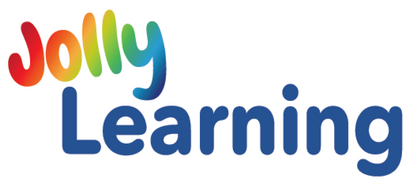FAQ
Shipping, Returns & Exchanges
We use all major carriers, and local courier partners. You’ll be asked to select a delivery method during checkout.
How long will it take for my order to arrive?
Delivery times depend on your location and the shipping method chosen at checkout.
Orders are processed within 1-2 business days.
How can I track my order?
Once shipped, you’ll receive a tracking number by email so you can follow your package.
What is the shipping policy?
Once your order is placed, you will receive a confirmation email letting you know that our fulfillment team has received your order. Once your order is fulfilled, you will receive an email notification with your tracking information. Shipping fees are non-refundable in the case of returns.
Do you ship overseas?
Yes, we ship all over the world. Shipping costs will apply, and will be added at checkout.
Can I change my order after placing it?
We can make changes if your order hasn’t been processed yet. Please contact us as soon as possible.
Can I cancel my order?
Yes, if it hasn’t been shipped yet. Once shipped, you may need to return the items instead.
When will I receive my refund ?
Refunds are processed within [X] business days after we receive and inspect your return.
I received the wrong item. What should I do?
Please contact us with your order number and a photo of the item, and we’ll arrange a replacement or refund.
My order is missing an item. What should I do?
Contact us right away so we can send the missing item or issue a refund.
Jolly Phonics
What is Jolly Phonics ?
The Jolly Phonics and Grammar programme is a systematic and progressive approach to teaching children essential literacy skills. It embeds phonics, spelling, punctuation and grammar from Reception/P1 to Year 6/P7 via teaching that is multi-sensory and active with fun actions, stories and songs.
You can find out more about the programme by clicking here
Why Do You Teach Letter Sounds And Not Letter Names?
Learning the letter sounds helps with blending (putting sounds together to make words, for reading) and segmenting (listening for the sounds in words, for spelling). The letter sounds can be identified in these words unlike the letter names.
(The letter names do still get taught relatively early on – we don’t ignore them completely – but initially the focus is on the sound, and not the name.)
Why Do You Teach The Letter Sounds In A Different Order To The Alphabet?
The letters from the first group (s, a, t, i, p, n) make more simple three-letter words than any other six letters, allowing children far more opportunities to start developing their blending and segmenting knowledge and skills as early as possible.
How Can There Be More Letter Sounds (42) Than Letters In The Alphabet(26)?
Sometimes, two letters put together can create a different sound to each letter put individually. For example, the letter sounds /s/ and /h/ make a new sound when combined as the digraph /sh/.
Some letter sounds can be spelt in different ways, such as the /ai/ sound in ‘cake’ and ‘day’. How does Jolly Phonics address that?
We teach one way of spelling the letter sounds initially, before later introducing alternatives as the programme progresses in to the later Grammar years.
You can find out more about the progression of alternative spellings by
viewing our Sample Lesson plan here.
What about words that aren’t easily decodable, such as ‘because’?
We include a selection of ‘Tricky Words’; words that cannot be decoded using regular blending and segmenting. These are taught specifically as sight words that children simply need to learn.
You can find out more about Tricky Words with this video via our YouTube channel.
What is the difference between 'print' and 'precursive' letters?
Precursive letters have exit tails – ‘little flicks’ – at the end that encourage joined-up handwriting. Print letters, meanwhile, do not have these. Many of the Jolly Phonics resources are available in both precursive and print letters, so it is important to check what your school policy is to ensure you purchase the correct versions.
Although this is not always the case, generally speaking those following a British English curriculum will use precursive letters, whilst those following an American English curriculum will use print letters.
Unfortunately, we do not have any resources that are available in fully cursive letters (with entry strokes).
Can I use other phonics readers alongside the Jolly Phonics programme?
All of our Jolly Phonics Readers are decodable, meaning they match the skills and knowledge taught within the Jolly Phonics programme. This means that the text is constantly within reach of the children, who are able to apply their knowledge to practice reading skills.
Other readers may contain words or spelling patterns that have not yet been taught within Jolly Phonics, meaning not only that the children will be unable to read certain parts, but also may create a negative experience that puts them off reading altogether. If you plan on ‘mixing and matching’ books from different schemes, schools must be very careful and check that the books being given to children have letter sounds and tricky words that have already been taught.
You can find out more information on our full range of decodable readers by clicking here. You can also discover how Jolly Phonics aligns with Book Bands by clicking here.
What is your return policy?
You can return unused items in their original condition within 14 days of delivery for a refund or exchange.
How do I return an item?
Contact our customer service team for return instructions and a return authorization.
